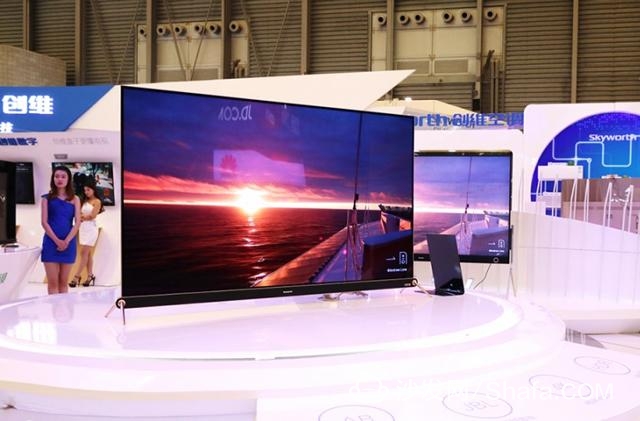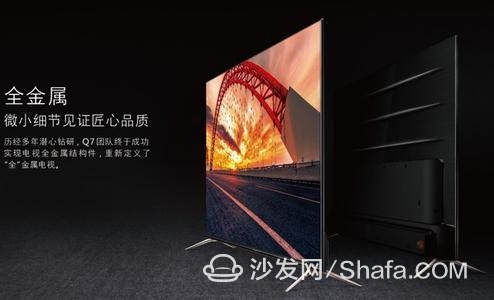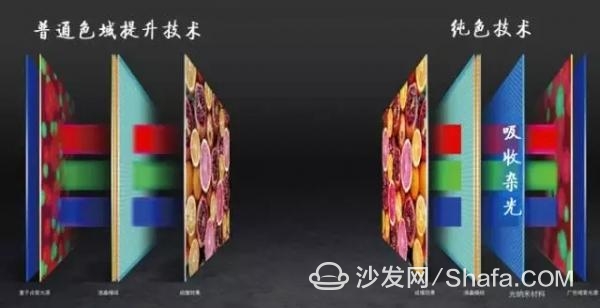From black and white to color, to the wide color gamut, the pursuit of color is one of the important directions of television display technology.
For several years since the development of color TVs, consumer demand for color TVs and usage habits have gradually changed. In the past, consumers were pursuing bright and vivid colors, and TVs with high color saturation became increasingly attractive online.
However, with the popularity of video processing on screen tone processing, the video source has been optimized for color. Originally, the colorful “sugar flakes†appear a bit “hot eyes†if they are under the dual effect of high saturation display technology. Now.

With the change of viewing habits, consumers are more inclined to choose natural, true-to-color TVs than distorted, highly saturated TVs.
TV manufacturers' efforts to improve the color of television have never stopped. The development of color display technology has accelerated in the past two years. Many manufacturers have introduced nearly 100% NTSC color gamut, and even claim to reach 110% NTSC ultra-wide color gamut television products. Display technology appears to be very narrow in the color direction. However, until the introduction of "solid color" technology television products in recent days, color display technology has been faced with bottlenecks in color purity that have been difficult to break through in the past few years.
Speaking of "solid color" technology, we have to mention the display device display principle. Currently, the display devices are based on the optical principle of additive color mixing method, and most colors are mixed by combining three primary colors of light at different ratios, and various color combinations after color mixing are combined to finally present a complete picture on a television.
The reality of the picture must first realize the purity of the three primary colors of light. As early as 1931, CIE (International Standard Lighting Committee) stipulated the CIE-RGB color system as the universal standard. The accurate wavelength values ​​of the three primary colors were red (R) of 700 nm and green (G) of 546.1 nm. Blue light (B) is 435.8 nm. The light closest to the standard wavelength is pure trichromatic light, and the standard deviation is stray light. When the three primary colors of the display device converge to their respective standard wavelengths in an infinitely concentrated manner, the most accurate and realistic picture can be presented after color mixing.

In order to enhance the color performance of LCD TVs, the industry has also introduced some outstanding color gamut enhancement technologies. Among the most widely known are the wide color gamut backlight technology and quantum dot technology. These two technologies provide excellent color display technology by providing a backlight with a wider color gamut and greatly improving the color gamut of LCD TVs. However, due to the non-self-luminous display characteristics of liquid crystals, there is a certain technical difficulty in the improvement of the purity of the three primary colors, and ultimately there is no breakthrough.
Recently, the solid color technology on the TV product Q7 launched by Skyworth broke the long-standing predicament of display technology in color purity, and a huge breakthrough in color display was a concern for the industry.
It is reported that Skyworth's solid color technology is based on the wide color gamut technology. A specially designed light nanomaterial is added between the wide color gamut backlight and the liquid crystal module. It is composed of micro particles with a diameter of about 1 nm and is specifically absorbed. The stray light emitted by the backlight source is used for the purpose of improving the purity of the three primary colors of red, green, and blue, so that the color of the screen after the color mixing can be more accurately and more realistically displayed under the premise of the wide color gamut. The breakthrough achieved by the appearance of solid color technology can be another important milestone in the history of color display technology.

The emergence of solid color technology is actually seen as a tribute to the most complete display technology OLED. Different display principles make the technical difficulty of OLED and LCD to achieve better color display completely different. OLED, as a self-luminous display technology, can directly display pure three primary colors of light and occupy absolute advantages in color display. The appearance of the solid color technology makes the picture effect of liquid crystal and OLED closer.
In recent years, many companies have adopted low-cost television price wars, while TV technology has been slow, and Skyworth has not given up on the pursuit of even better image quality. Whether it is the OLED that it has vigorously promoted or the solid color technology that has been introduced this time, it has demonstrated its essential pursuit of display technology as a television company.
Smart TV/box information can focus on smart TV information network sofa butler (http://), China's influential TV box and smart TV website, providing information, communication, TV boxes, smart TVs, smart TV software, etc. Answering questions.
For several years since the development of color TVs, consumer demand for color TVs and usage habits have gradually changed. In the past, consumers were pursuing bright and vivid colors, and TVs with high color saturation became increasingly attractive online.
However, with the popularity of video processing on screen tone processing, the video source has been optimized for color. Originally, the colorful “sugar flakes†appear a bit “hot eyes†if they are under the dual effect of high saturation display technology. Now.

TV manufacturers' efforts to improve the color of television have never stopped. The development of color display technology has accelerated in the past two years. Many manufacturers have introduced nearly 100% NTSC color gamut, and even claim to reach 110% NTSC ultra-wide color gamut television products. Display technology appears to be very narrow in the color direction. However, until the introduction of "solid color" technology television products in recent days, color display technology has been faced with bottlenecks in color purity that have been difficult to break through in the past few years.
Speaking of "solid color" technology, we have to mention the display device display principle. Currently, the display devices are based on the optical principle of additive color mixing method, and most colors are mixed by combining three primary colors of light at different ratios, and various color combinations after color mixing are combined to finally present a complete picture on a television.
The reality of the picture must first realize the purity of the three primary colors of light. As early as 1931, CIE (International Standard Lighting Committee) stipulated the CIE-RGB color system as the universal standard. The accurate wavelength values ​​of the three primary colors were red (R) of 700 nm and green (G) of 546.1 nm. Blue light (B) is 435.8 nm. The light closest to the standard wavelength is pure trichromatic light, and the standard deviation is stray light. When the three primary colors of the display device converge to their respective standard wavelengths in an infinitely concentrated manner, the most accurate and realistic picture can be presented after color mixing.

Recently, the solid color technology on the TV product Q7 launched by Skyworth broke the long-standing predicament of display technology in color purity, and a huge breakthrough in color display was a concern for the industry.
It is reported that Skyworth's solid color technology is based on the wide color gamut technology. A specially designed light nanomaterial is added between the wide color gamut backlight and the liquid crystal module. It is composed of micro particles with a diameter of about 1 nm and is specifically absorbed. The stray light emitted by the backlight source is used for the purpose of improving the purity of the three primary colors of red, green, and blue, so that the color of the screen after the color mixing can be more accurately and more realistically displayed under the premise of the wide color gamut. The breakthrough achieved by the appearance of solid color technology can be another important milestone in the history of color display technology.

In recent years, many companies have adopted low-cost television price wars, while TV technology has been slow, and Skyworth has not given up on the pursuit of even better image quality. Whether it is the OLED that it has vigorously promoted or the solid color technology that has been introduced this time, it has demonstrated its essential pursuit of display technology as a television company.
Smart TV/box information can focus on smart TV information network sofa butler (http://), China's influential TV box and smart TV website, providing information, communication, TV boxes, smart TVs, smart TV software, etc. Answering questions.
Wuxi Jinle Automobile Motor Factory , https://www.wxjldj.com